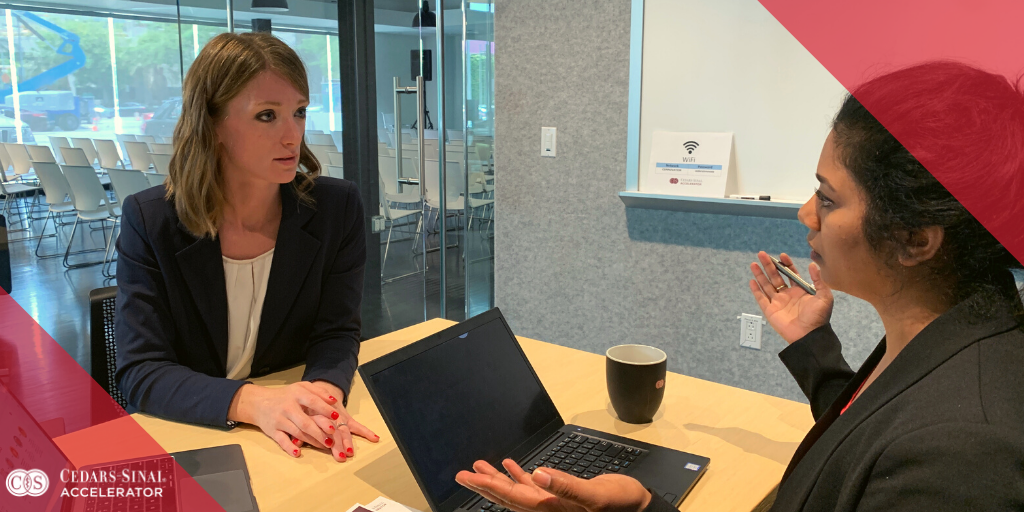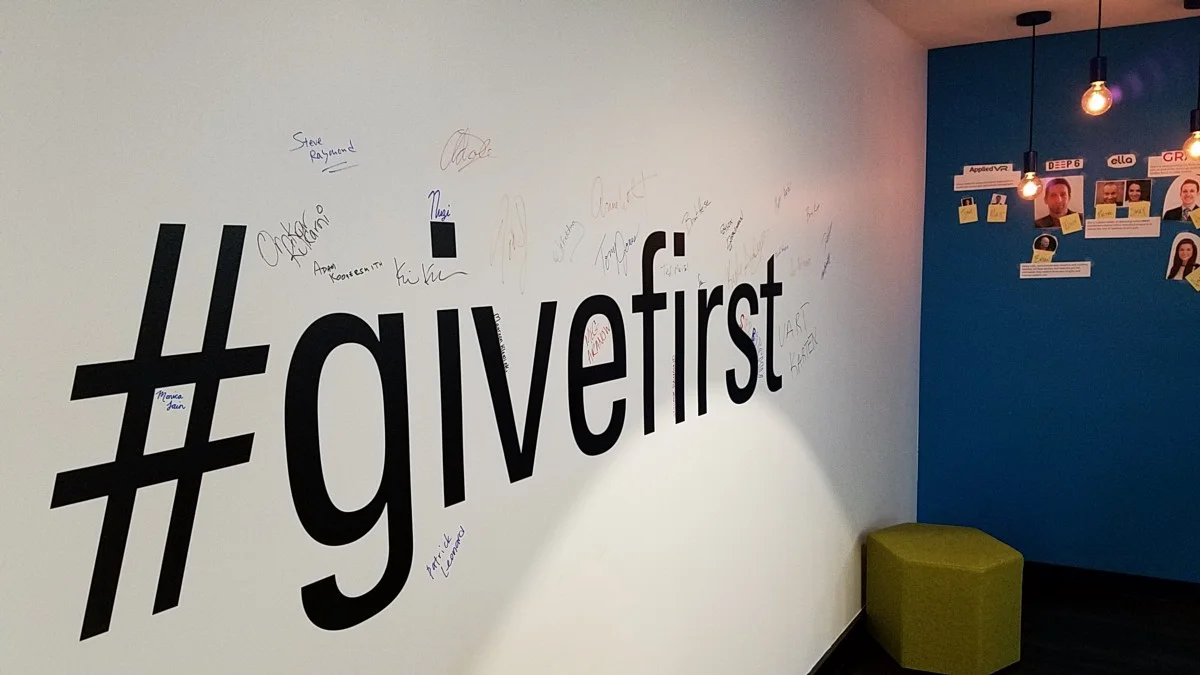Before we started Techstars, I made a promise to myself and a friend that I’d write a weekly blog about what happened and what I learned. Well I skipped week 4, so this is a combo post. Fair warning, it’s a bit long.
A lot of people like to refer to entrepreneurism as a marathon, rather than a sprint. Frankly, I think that’s wrong. My (somewhat limited) experience so far has shown me that starting a company is more like a series of sprints, connected only by the occasional break to re-orient yourself as a founder.
While I’ve never run a marathon, I think I understand the general concept. Running a marathon requires a deliberate focus to keep your pace consistent over a great distance, right? That’s not startup life. At least not in my experience.
In my experience, startup life is about all out speed, and somewhat deliberate chaos. Needed to make a major decision yesterday? Manageable. Just found out about a grant opportunity? Bring it. Major product revisions before the rollout this Friday? Assemble the devs!
It may get crazy on a fairly regular basis, but the sprints of startup life are pretty normal and they’re generally pretty distinct. You run a 100m dash, collect yourself, power through the 200m race, take another breather to make sure you’re on the right track, and knock out a 400m sprint. Easy? No. Impossible? Also no.
Sometimes its ugly.
So if starting a company is a marathon of sprints, what is an accelerator? Again, recognize that I’m coming at this analogy from a point of inexperience, but Techstars feels like a marathon of those Spartan/Tough Mudder/etc. races.
Here’s the big difference vs normal startup life: in an accelerator, you set a big weekly goal for yourself that requires several components to come together. That may be normal for some companies, but it doesn’t fit medical devices well. To achieve those goals, you’re sprinting (finding experts/stakeholders to talk with), leaping over hurdles (setting up meetings), slogging through mud (product development), making semi-blind leaps (also product development. Or business strategy. Both), crawling under razor wire (definitely anything to do with regulatory compliance), and trying to avoid the jerk with the fire hose (customers and/or investors giving feedback). And that’s all just Tuesday. Oh and don’t forget that you set yourself two big goals this week, because you’re a masochistic jerk.
Turns out Soylent isn’t people. It’s astronauts. Tasty tasty astronauts.
Perhaps this process is slightly better for the companies with larger teams, but word around the Soylent fridge is that the variety of the work may be reduced on an individual basis, but there’s an corresponding increase in the magnitude of work. Racing around to put out small fires becomes flying cross-country to fight blazes.
Sorry, my analogy got away from me there… We were talking about running weren’t we? And who would put fires on a track where people are racing? Probably a competitor.
If it sounds like we’re a bit crazy to deal with all this, allow me to confirm your suspicions. We’re not just dealing with our crazy world, we’re probably loving it. Well most days. Generally not Tuesdays though. Tuesdays are the worst.
. . .
So what did we learn the past two weeks? A lot:
Perception of our prototype performance vs current laryngoscopes, where 3 is equal performance.
Weekly key performance indicators (KPIs) and hardware companies don’t quite fit with each other. It has taken us about four weeks to get there, but we finally have a KPI graph to show — potential users of our scope like the design changes we’ve made! Once we’re outside of the accelerator environment where weekly gains are necessary, our KPIs will make much more sense on a monthly cadence.
See that patent print? It’s from 1937 and the most common laryngoscope design has changed very little since then. Replacing it is my motivation.
However, our Kanban is kind of sad. Look at that backlog! Gross. The huge backlog stems from struggling to prioritize work when it all seems important.So we had to create a “reconsider” category to allow ourselves a way out of dealing with things that still feel important, but we know aren’t going to happen this week. I’ll let you know when it really starts helping.
When really uncommon or interesting feedback comes your way, it is important to fully consider the source and the implications of following the feedback. We received some feedback about our business strategy that we hadn’t heard before during mentor madness and got similarly challenging feedback in week 5. The questions that were posed to us forced us to revisit not just our targets for first sales, but also our timeline to corporate and distribution partnerships. You know, just a few minor details.
When I wanted to dismiss the feedback or revert back to old decisions (out of laziness/frustration/decision exhaustion), Maggie really dug in to make sure we got the most out of the feedback that we could. The result was a lot of additional effort to make sure we found the right experts that could give us specific feedback about our niche, but we have much more clarity now. So not only did I get a lesson in the value of digging into feedback, I got a reminder that your startup co-founder is critically important during tough times.
So what did we learn from all the feedback? The business development strategy possibilities for a medical device company are very, very diverse. Maybe that is a really predictable answer, but I could easily write a post on just medical device business strategy and not cover it all. Maybe I will, later.
The inter-program bond continues to grow, at speeds and strengths I have not witnessed before. Each time one of the companies has experienced a major challenge, the rest of the cohort has been incredibly supportive.Sometimes it’s simply encouragement, sometimes that support is connections to experts, and others it’s actively helping solve a problem. We experienced all of this in the past two weeks, and I’m really grateful for the opportunity to work in such an uncommonly supportive environment.
This is going to sound dumb, but I had a revelation the other day, based on my experience intubating a simulator in the Cedars-Sinai patient simulator lab… our laryngoscope is going to have a potentially massive impact on the lives of the patients it touches. Only through a fervent focus on perfecting the device can we ensure that our device will only improve patient outcomes. This unfortunately means that product design setbacks, while not inherently positive, are important because they refocus us on getting the design right. Not until we get our fully functional prototypes into the lab again in two weeks will be be able to prove the efficacy of our recent design changes.
Other random thoughts:
- Patience may be a virtue, but it’s a pain in the ass. Unfortunately everything seems to ask me to be patient lately.
- Louisville, we talked about having an open relationship, right? LA has been flirting really hard with me, and I’m finding it hard to resist…
If you enjoyed this, follow me here (and on Twitter) for more. Also, please share with anyone you know in entrepreneurship; disseminating my knowledge gained from this experience is a big goal for me. I’ll be writing a weekly recap of lessons learned during Techstars, along with some occasional posts about medical devices, startups, healthcare, etc.












